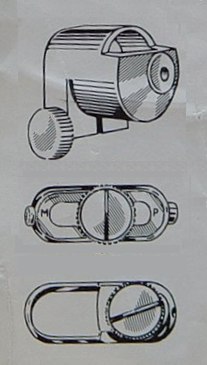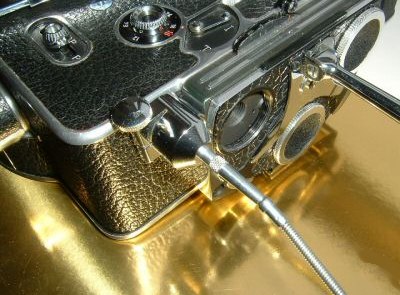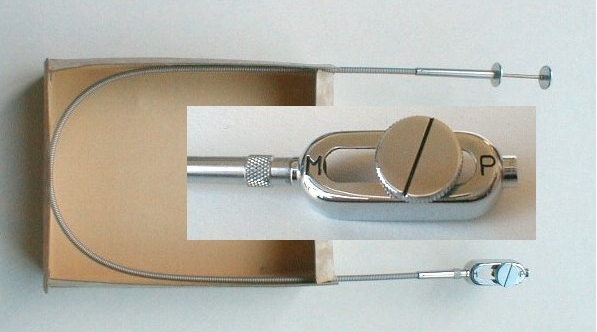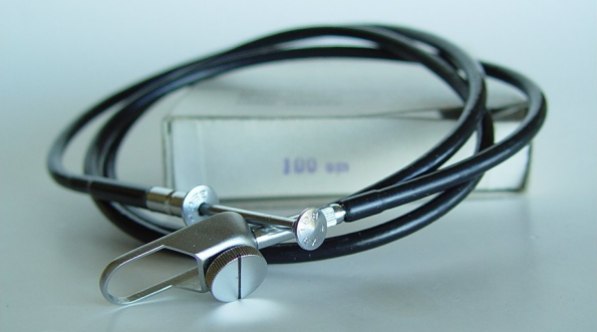Bolex H16 User
The home of practical Bolex H16 filming on the net
Cable Releases
Bolex Product Codes (CLOHE, CLOIC, 265.038 CLOVI)
Cable releases are needed to start the camera running without the operation of triggering the camera's release resulting in an unsteady shot. These releases can only be used on Spring driven cameras from the earliest H camera up to the SBM.
All the cable releases from Bolex consist of two parts:-
 1.
The cable (available in a number of different lengths) with a plunger
at one end and a screw thread at the other
1.
The cable (available in a number of different lengths) with a plunger
at one end and a screw thread at the other
2. A metal bracket which attaches to the end of the cable and the part of the camera being used to trigger filming.
 Both
of these parts being interchangeable. I.E. If you have any of the cables
they should be able to be screwed into any of the brackets and vice versa.
Bolex produced three types of cable releases for use on its H series of
reflex cameras. A chronological introduction of each cable release follows.
Both
of these parts being interchangeable. I.E. If you have any of the cables
they should be able to be screwed into any of the brackets and vice versa.
Bolex produced three types of cable releases for use on its H series of
reflex cameras. A chronological introduction of each cable release follows.
 The
first with the Bolex product code (CLOHE) shown right was designed to
be attached to the push button release at the front of all H8 and H16
cameras.
The
first with the Bolex product code (CLOHE) shown right was designed to
be attached to the push button release at the front of all H8 and H16
cameras.
A small metal shoe bracket fits around the metal shielding of the front push button release and tightens around it with the aid of a screw. Then a cable release can be screwed into it to trigger the camera.
 The
second type of cable release shown left with the Bolex product code (CLOIC)
attaches to the side release, the preferred way of using a camera release
with a Bolex camera.
The
second type of cable release shown left with the Bolex product code (CLOIC)
attaches to the side release, the preferred way of using a camera release
with a Bolex camera.
This release does its job well however it can not be used when the Rexofader is present and vice versa.
You could screw the cable release in both sides. So you could take still frames as well as motion. Early versions had M and P embossed in them, later ones didn't.
 The
third type of cable release with the Bolex product code (CLOVI) again
attaches to the side release of the camera. However the left hand side
of the attachment bracket has been made smaller to fit under the third
arm of the Rexofader.
The
third type of cable release with the Bolex product code (CLOVI) again
attaches to the side release of the camera. However the left hand side
of the attachment bracket has been made smaller to fit under the third
arm of the Rexofader.
When attaching and using the external electric motors with the spring driven cameras. The cable release cannot be used to start the camera running and must be removed to allow them to be fitted.


Older cable releases can be identified by having an outer cable cover of wound spring metal (right) while the later releases have a black plastic cable (Left).